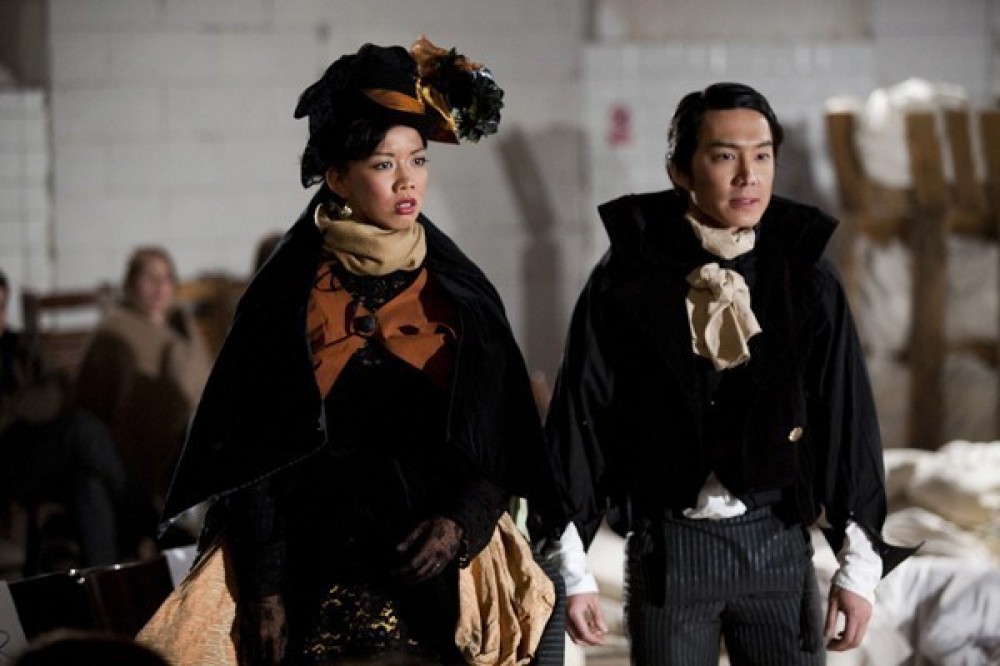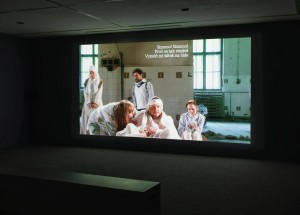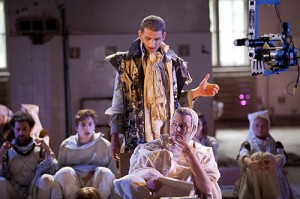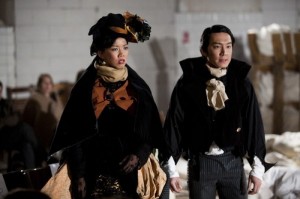Althea Thauberger’s Marat Sade Bohnice is a video installation that centres on the staging of Peter Weiss’ 1963 play Marat/Sade at the Bohnice Psychiatric Hospital in Prague. Her work documents the reconfiguration and presentation of the play in this location to audiences of the institution’s patients and staff, and in doing so approaches layered issues of reassessment and (de)institutionalization within shifting political terrains.
The original 1963 play imagines that the Marquis de Sade wrote and directed a play about the assassination of Jean-Paul Marat while the former was interned in France’s Charenton asylum in 1808, nineteen years after the beginning of the French Revolution and immense institutional reform. It was the beginning of reformed mental illness treatment – from punishment to therapy – and in the 1963 play, the inmates enact the drama both as themselves as patients and as historical characters. The play reveals an ongoing debate about whether the imperatives of revolution originate within the individual or within society as a whole.
While the original play is set in Charenton’s bathhouse, Thauberger’s production took place in the decommissioned waterworks and laundry facilities of Bohnice, another post-revolutionary institution and the largest psychiatric clinic in the Czech Republic. Her video documentation of the play is punctuated by interviews with staff and patients of the institution that function to disrupt the play’s narrative and specifically situate it. Like Charenton, Bohnice is an institution through which broader structural, ideological and economic societal shifts can be read: it privatized its core services shortly after the Velvet Revolution and it is in the beginning stages of deinstitutionalization. Thauberger produced the play in collaboration with Akanda, an experimental theatre company in Prague.
Marat Sade Bohnice approaches philosophical and art histories, questions art’s agency and its role within therapy, as well as troubles the systems of human (un)freedom. Shown in Vancouver for the first time, the work can be read beside the conditions of deinstutionalization in the city. Consistent with Thauberger’s practice, in which she often works with seemingly marginal groups through which larger societal structures may be examined (such as a Kashmiri theatre group, new mothers in Copenhagen, San Diego military wives, Canadian tree planters, Canadian women in uniform deployed in Afghanistan, male youth in the German civil service, minority-language poets in Italy and resident artists of Vancouver’s Downtown Eastside), the project Marat Sade Bohnice creates a space of expression and self-presentation for her collaborators, and reveals social and political issues without assuming an entrenched critical position.





